Doctor Strange
 for sci-fi violence and action throughout, and an intense crash sequence.
for sci-fi violence and action throughout, and an intense crash sequence.
Reviewed by: Jessica D. Lovett
CONTRIBUTOR
| Moral Rating: | Very Offensive |
| Moviemaking Quality: |
|
| Primary Audience: | Adults Teens |
| Genre: | Superhero Sci-Fi Action Adventure Fantasy |
| Length: | 1 hr. 55 min. |
| Year of Release: | 2016 |
| USA Release: |
November 4, 2016 (wide—3,800+ theaters) DVD: February 28, 2017 |
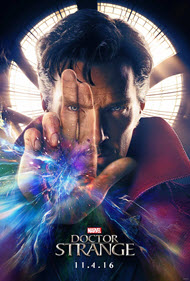


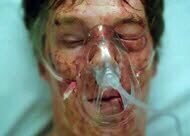
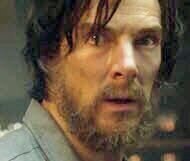
self-centeredness
arrogance and pride, compared to humility
dealing with personal tragedy
magic and magicians in the Bible
sorcery in the Bible
alternate dimension
Can mysticism lead to God? Answer
Why I stopped following Buddha and started following Jesus Christ? Answer
Ten Questions I’d Ask If I Could Interview Siddhartha Gautama (Buddha) Today
personal story: Jesus Christ 2, Buddha 0
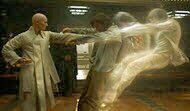
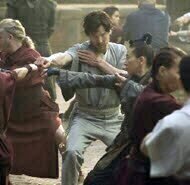
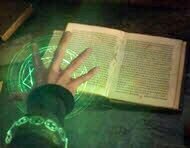
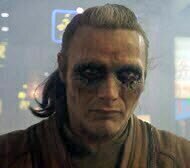
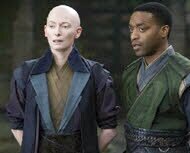
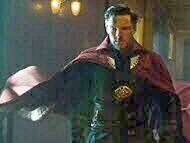
| Featuring |
|---|
|
Benedict Cumberbatch … Dr. Stephen Strange Chiwetel Ejiofor … Mordo Rachel McAdams … Christine Palmer Tilda Swinton … The Ancient One Benedict Wong … Wong Mads Mikkelsen … Kaecilius Michael Stuhlbarg … Dr. Nicodemus West See all » |
| Director |
| Scott Derrickson — “Deliver Us from Evil” (2014), “Sinister” (2012), “The Exorcism of Emily Rose” (2005) |
| Producer |
|
Marvel Studios Walt Disney Studios Motion Pictures See all » |
| Distributor |
Propelled by selfish ambition to discover the power of witchcraft and sorcery in order to participate in a spiritually based faction wrought with strife
Sequel: “Doctor Strange in the Multiverse of Madness” (2022)
Marvel’s newest comic book based film, “Doctor Strange” is the most visually stunning, creative film set in the Avengers universe, so far. Where the Avengers movies take you flying by buildings and careening over fiery explosions, “Doctor Strange” takes you through rainbow-tinted alternative dimensions in time and space and racing madly over folding scenery as it collapses around you! It is a psychedelic, extremely witty, fairy tale completely unlike anything I’ve ever seen before, though it does have a kind of Harry Potter slash Matrix vibe.
It also turns the whole superhero idea on its head, equating the power of magic with something to be attained as one gains a higher personal spirituality. For example, more difficult spells are mastered as one reaches higher levels of spiritual enlightenment. Michael Giacchino’s (composer for “Star Trek Beyond,” “Ratatouille,” “Up,” “Jurassic World”) sweeping, breathtaking score is the perfect backdrop for the impossible sights of the film. With so many films being predictable, plot-driven or remakes of very familiar tales, “Doctor Strange” certainly takes many flights of fancy that one cannot anticipate beforehand, which in itself is a treat.
Doctor Stephen Strange (Benedict Cumberbatch) is a gifted neurosurgeon who seems to have all the worldly trappings of success: a penthouse apartment, fancy sports car, patients begging to be seen by him, and respected speaking engagements. His world is anchored by the dexterity and control of his hands and his renowned skill in surgery. In a car accident on the way to one of his speaking engagements, his hands are injured beyond repair, and it is all he can do after much therapy to write his name in the shaky handwriting of a 5-year-old. Seeing his existence as shattered and hopeless, he pours his remaining fortune into finding a cure for his hands in order to regain his career.
Stumbling into the story of someone in similar situation who was healed beyond predictions after going to a mysterious sanctuary in the Himalayas, he buys a one-way ticket there with his last cent. There he meets The Ancient One (Tilda Swinton) who ushers her new pupil into the world of spiritual warfare and the power of the mind over matter.
A much more multifaceted and deep plot than previous Marvel films, “Doctor Strange” explores many different ideas about life and the struggle that all have for inner peace. The film makes the audience come to terms with what moral or societal rules they would deem acceptable to break in order to save others’ lives. Also, exploring the themes of mind-over-matter, the validity of achievement out of hubris vs. humility, atheism vs. religion, career as idolatry, the role of a physician in the lives of patients, single universe vs. multiverse, and personal loyalty, this film turns over many philosophical themes that simply do not fit in other comic book superhero films that are have more science-based plots than does the mystical, seeking story of Dr. Stephen Strange.
Adam Frank, astrophysicist at the University of Rochester who served as a consultant for the film, explained the rift like this:
“People often want to talk about the Marvel Cinematic Universe and science, but here’s a place where really, what we’re looking at is the Marvel Cinematic Universe and philosophy. The real question here is the mind-body problem, which goes back to Plato and Aristotle, but really to Descartes. What is the relationship between [the] mind—not just our thinking, but our subjective experience of the world—and matter?
Many people in science will come at a reductionist perspective—that you are nothing more than your neurons, and your neurons are nothing more than quarks, so that the fundamental objects and their rules determine everything that happens on larger structures. But a nonreductionist perspective says no, there’s actually something more going on there—that mind experience cannot be reduced just to gears in your head; there is some way in which there’s something fundamental going on about the universe at the level of experience that has to be included in the counts of atoms. That’s the way we talked about this; that’s the way in for “Doctor Strange.”
Marvel films have always had a profound respect for science and what they have done with “Doctor Strange” is take a very brilliant, scientific character who has built his entire life on the knowledge and boundaries that his science-based education has given him and put him in a compromising situation that forces him to explore the limitless spiritual side of the world that he has never given any regard whatsoever to before. That being said, it has more than its fair share of controversial material that is sure to offend those sensitive to signs of the occult.
“Occult” can be defined by “supernatural, mystical, or magical beliefs, practices, or phenomena.” There is no masking the fact that a black-and-white thinking, logical doctor is led into a fantastical world of “occultism” and that, by default, creates lots of gray areas in his newly reforming points of view about the universe. He experiences spiritual journeys though different kaleidoscope-like places that he finds difficult to fathom. In short, the word that most critics are commonly using to describe this movie is “trippy.” It is that! Mixing up essences of several world religions, “Doctor Strange” has many uses of symbolism and fictitious emblems of opposing spiritual groups to give its story gravitas, but I am honestly not schooled enough in these things to tell if any of the symbols are actually made up for the comic only or are “real” occult images.
Obviously, different groups being assigned a symbol to identify its henchmen and whatnot does not make that symbol inherently evil. However, like many films before it, “Doctor Strange” does use its beguiling imagery to make witchcraft and the occult look powerful, appealing, and to seem like a positive thing to pursue. As Christians, we are called to heed Galatians 5:20 and run from all forms of witchcraft, sorcery, selfish ambition, factions, and strife. Put in a Galatians 5:20 frame, “Doctor Strange” is a film about being propelled by “selfish ambition” to discover the power of “witchcraft” and “sorcery” in order to participate in a spiritually based “faction” wrought with “strife.” I would highly recommend not bringing teens or those who are in the process of incubating young, still-forming, worldviews to the film.
The film is surprisingly low in sexuality, with just a mild cheek-kiss scene, one mention of the term “sleeping together,” and little nudity. There are many gruesome images surrounding Doctor Strange’s surgeries—his own and his patients’. He is seen with extensive injuries and metal pins in his strung-up bloodied hands. Also, there are several violent fight scenes with swordplay, a character being strung up by magical whips, fist fights, and bloody stabbings. In one scene, Doctor Strange is killed and revived in several different violent ways by a demonic warlord of another dimension. There is no smoking or drug use, but, by overturned wine bottles, it is inferred at one point that a character has been drinking. Due to the traumatic images, I would not personally recommend it for children.
While faith Jesus Christ lifts your spirit by setting you free from the binding power of sin and giving you hope in Him, the “dark arts” secretly chain you to its rule with promises of hope and power that are propelled only by selfishness and pride and are truly rooted in the influence of evil. Though the dialog is flawlessly written, and the special effects are jaw-dropping, this very dividing, controversial film is not for everyone, and I encourage you to carefully consider before viewing it.
Violence: Heavy / Profanity: Mild—OMG (2), “h*ll” (1), “a**hole” (2), “a**” (1), s-words (2) / Sex/Nudity: Mild—passionate kiss, references to being lovers, shirtless man
See list of Relevant Issues—questions-and-answers.


Yes, there is magic, but I simply don’t see a difference in the types of magic that are and are not supposed to be acceptable to Christians. Many of the series we embrace are full of magic—“The Chronicles of Narnia” and “The Lord of the Rings” to name two of them (the same magic as in the Harry Potter series, which is often eschewed). Just like every other movie with magic, this one maintained a distinction between the good and the bad. As so many movies with magic do. There is evil, and there is good. Magic is a way for us to speak about the reality of our lives in a way that it isn’t so close to home it’s painful. See all »
Moral rating: Average / Moviemaking quality: 5
If one does not know the difference between reality and fiction, then I would recommend staying away from Dr. Strange, Narnia, et al. If one knows the difference, Dr. Strange is a great platform to discuss the reality of God/Jesus Christ vs. Fictitious characters. One line in the movie goes something like, “Now there is false doctrine, and real doctrine.” This is an excellent discussion tool to discuss reality vs. Unreality with your kids and friends. See all »
Moral rating: Better than Average / Moviemaking quality: 4½
After skipping this entry in the Marvel Cinematic Universe during its theatrical release, I decided to buy it, without seeing any clips online, to get acquainted with the character before seeing Avengers: Infinity War next week. I enjoyed the film, but there are a few moderate and strong profanities (yes, this is a Marvel Studios production, but Walt Disney Studios owns said company, so why the harsh language?) and the stupid decisions not to have the male Asian character be a tea-bearing manservant or practise martial arts, as in the comic books (which I have not read), though his character arc was good. Political correctness is seeping into entertainment, and that is not a good thing. There is enough of that garbage from the terrorist group black lives matter, and anyone who swallows that race crap about whites being responsible for every bad thing that has befallen the black community. But I digress.
The acting is terrific, and the writing good with the above caveats noted.
Biblically speaking, there is plenty of violence, most of it not graphic, an intense accident scene, and several profanities which I alluded to earlier. There is no sexual content.See all »
Moral rating: Better than Average / Moviemaking quality: 4
The pros of this movie are that we see Dr. Strange turn from a man who just does things to build up his ego and pride to someone who is willing to sacrifice himself for others. The movie is also extremely artistically beautiful, the language and romance very restrained compared to other Marvel movies, and it has many humorous moments. The cons are the magic and mysticism that is in this movie. Although the Eastern Religious philosophy has been Westernized in this movie, it could make some people be more open to looking for spiritual answers in Eastern mysticism.
Also, there are “intense” medical scenes and some characters are stabbed. This is a good movie if you like the superhero genre, feel firm enough in your Christianity to recognize how Christ would answer the questions posed in this movie, and like movies that are highly artistic. Personally, I really enjoyed it and would like to see it again eventually.
Moral rating: Average / Moviemaking quality: 5
A man who, through his own efforts, evolves to a higher level of personal power and intellect as well as selflessness. The secular progressives” superman. This movie made me contemplate its meaning and symbolism and theology like no movie I can remember. Unfortunately, it depicts a counterfeit savior. It’s all good fun to show Iron Man conquering some villain with a super-suit, or Spider-man/Hulk/Captain America who undergo some biological transformation, but the supernatural realm has been limited to Thor and his Norse mythology. This one comes much closer to what today’s deceived cultures embrace now and maybe that’s why it is so disturbing.
Don’t get me wrong, I took my grown son the first time and I am seriously thinking about going again with my wife on a date night. It was great entertainment, and the thought-provoking challenges just help me keep my theological thinking sharp. Enjoy the movie, but have a biblical discussion after. Oh, and, by the way, there is a Pink Floyd song in the movie. It fits perfectly with the trippy expanded universe basis of the movie.
Moral rating: Better than Average / Moviemaking quality: 5
However, and most importantly, as the movie came to an end, I saw something weird. Doctor Strange was supposed to be the protagonist. But he ended up bargaining with Dormamu, who was practically the lord of the dark side. Recall when Satan asked Jesus to bow to him, and he would give him the world? I felt this was a masked twist, a negotiation, instead of the instant rebuke (I may be over thinking this). I expected a plot or fight or something different. I don’t know where my thoughts are headed, but something just feels weird within me. Something uneasy and STRANGE.
Moral rating: Excellent! / Moviemaking quality: 4½
I saw many times where “magic,” the dark arts, or whatever form it took in this film, was referred to as a “savior”. The main antagonist said that it saved him from his brokenness… and yet how quick he was to turn on his “teacher” and follow something darker offering “eternal life”. Eternal life only comes through Jesus! “That as sin hath reigned unto death, even so might grace reign through righteousness unto eternal life by Jesus Christ our Lord.” Rom 5:21 Witchcraft being mentioned in the list of the works of flesh in Galatians 5:19-21, further states that those that work in these works “shall not inherit the kingdom of God”.
I suppose my main trouble, and fear, with a story such as this is that witchcraft, the use and promotion of it, is glorified to a degree that young people may try to seek it rather than Jesus. Sin should not be glorified… but should be made to be exceedingly sinful! And ladies and gentleman, witchcraft is sin…
Watch with caution… not for the typical nudity (none thank goodness), language (too much in my opinion) or violence (plenty)… but guard your hearts. There is a supernatural world, but, I assure you, the only “ancient one” is Jesus!! “As a man thinketh in his heart, so is he” (Prov 23:7). “For the wages of sin is death; but the gift of God is eternal life through Jesus Christ our Lord.” Rom 6:23
Moral rating: Very Offensive / Moviemaking quality: 5
Moral rating: Better than Average / Moviemaking quality: 5
Moral rating: Excellent! / Moviemaking quality: 5
Moral rating: Better than Average / Moviemaking quality: 5
PLEASE share your observations and insights to be posted here.
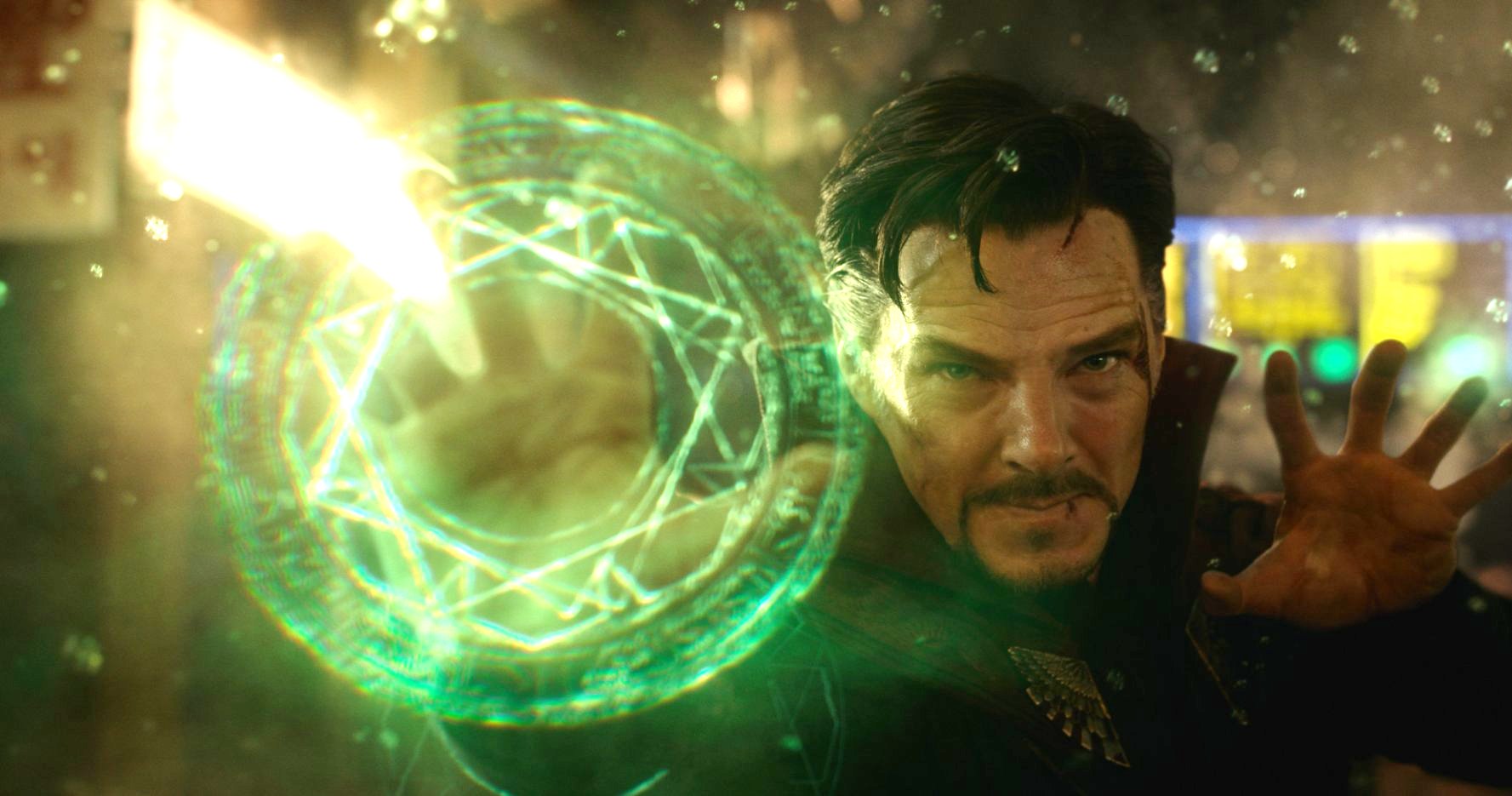
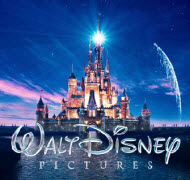
My Ratings: Moral rating: Average / Moviemaking quality: 5